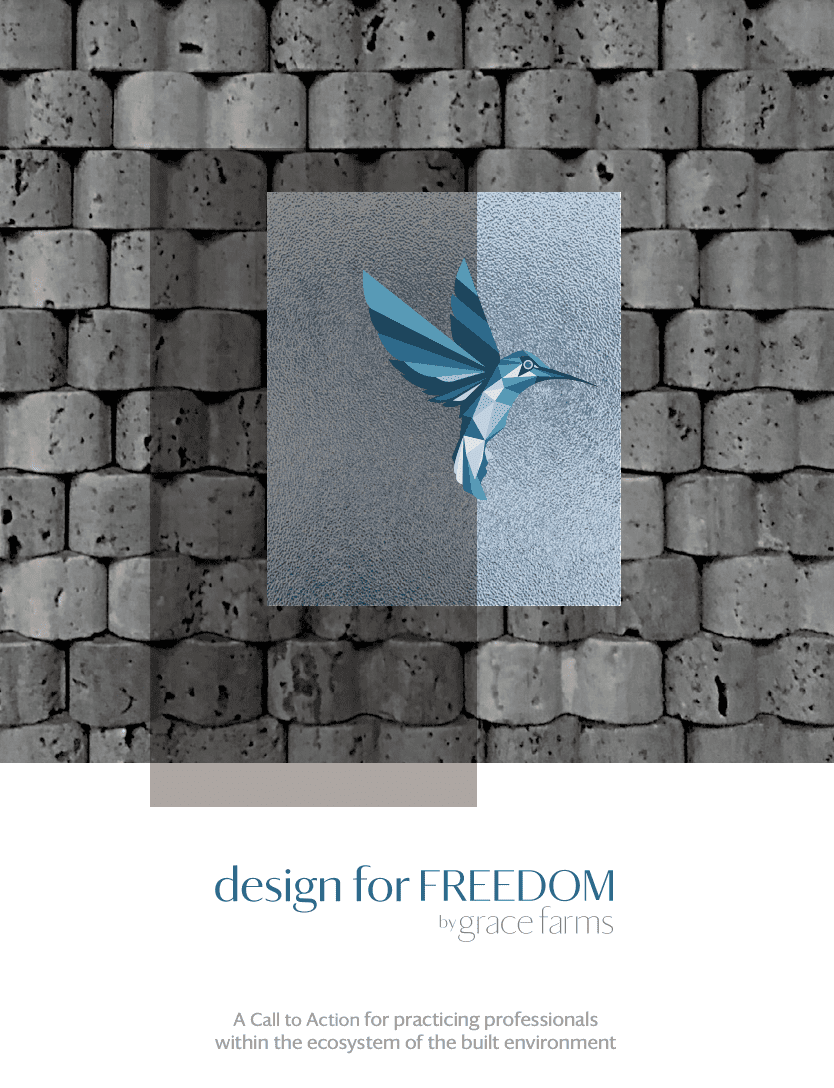
Design for Freedom
EXECUTIVE SUMMARY
This report, Design for Freedom, is meant to raise awareness about slave labor in the built environment and propose an industry-wide call to action.
Within a short time, the Design for Freedom Working Group, which was launched by Sharon Prince, CEO and Founder of Grace Farms Foundation, and the late Bill Menking, Editor-in-Chief of The Architect’s Newspaper, has galvanized more than 60 industry leaders and experts who have committed their expertise and wherewithal in a joint effort to eliminate modern slavery in the built environment.
This report not only provides relevant data and analysis on slavery that is cemented into the very foundations of our buildings, it also documents the emergence of a movement — a radical paradigm shift driven by these global leaders. Members of the Design for Freedom Working Group who contributed to this report represent the full ecosystem of the global architectural, engineering, and construction (AEC) professions. While initial attention in these sectors concentrated on developing ethical labor practices on construction and job sites, we now seek to extend this ethos to the building materials supply chain, including subcontractors, manufacturers, and commodities-level providers in such areas as forestry, fiber, and mining.
Globally, almost 25 million people are held in servitude for forced labor and close to 152 million children from the ages of five to 17 are subjected to child labor.1 As a society, we have a moral and ethical obligation to end exploitation that subsidizes the bottom line of all residential and commercial construction projects across the world.
“Doing the right thing” can make an impact. Less than 30 years ago, only a handful of advocates, architects, and designers pushed for a higher environmental and social consciousness between the building industry and the built environment. This awakening resulted in the green building and design for environmental justice movements. LEED-certified buildings, including Grace Farms in New Canaan, Connecticut, are now part of the industry’s mainstream design and construction expectation.
Similarly, by harnessing the collective will of industry leaders across the world, we can move the needle on this pressing humanitarian crisis. The Design for Freedom report presents achievable calls to action, including the development of slave-free specifications and rigorous auditing standards in the procurement of construction materials, as well as the use of big data and technology, to dismantle the illegal dependence on slave labor. The report also lays out an ethical business model to reduce reputational risks and increase long-term gains.
We are in a historic time when, around the world, human rights are being fought for, elevated, and protected. Now is the time to raise awareness about slavery in the built environment and move forward to eradicate it from the world’s largest global supply chain.
Read the report here.
